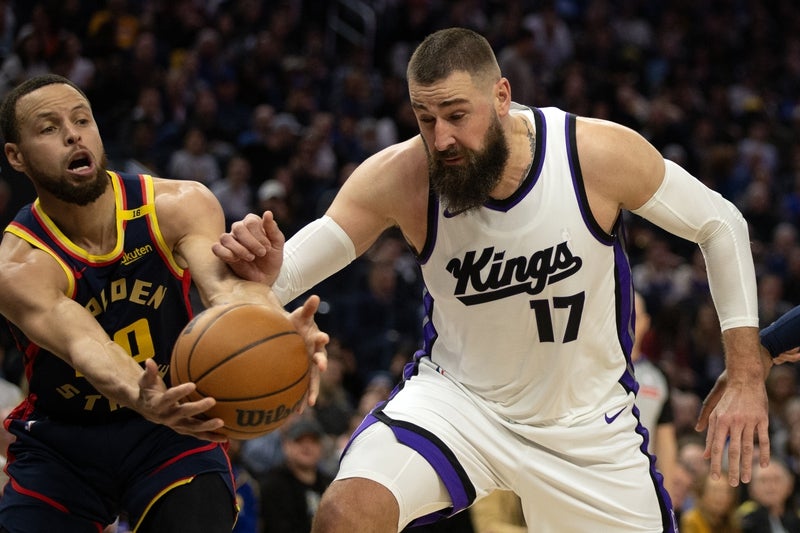NBA Playoffs Betting Odds
Brent Booher
Sadonna Price
The NBA regular season is an 82-game marathon (or about 40 games if you’re Joel Embiid) that determines the ranking of teams in each conference before the main event, the NBA Playoffs, takes center stage from mid-April until the NBA Finals conclude in June.
For NBA fans and sports bettors alike, this long season and postseason provide plenty of opportunities to place bets. One of the most popular futures bets in the NBA is predicting which teams will make or miss the playoffs.
This betting market stays open for most of the season, as 20 teams initially qualify for the playoffs, and the field of teams narrows with each playoff round.
The following article will cover everything you need to know about betting on NBA playoff teams, as well as which teams might still be worth betting on as the 2024-25 NBA regular season nears its end.
Note: Odds were correct at the time of writing.

How is the Winner Decided?
The NBA is a 30-team league divided into two conferences: the Western Conference and the Eastern Conference.
Each conference sends an equal number of teams to the playoffs every year, with the top six teams in each conference receiving automatic entry into the playoff bracket. Teams that finish ranked 7th through 10th in each conference participate in the NBA Play-In Tournament.
In the Play-In Tournament, the teams ranked 7th and 8th face off in the opening round, with the winner advancing to the traditional 16-team playoff bracket. The loser of that game then competes against the winner of the 9th vs. 10th place game, with the winner securing the 8th seed in their conference.
Once the Play-In Tournament is complete, the playoffs follow a more traditional format. The top seed in each conference faces the 8th seed, the 2nd seed faces the 7th seed, the 3rd seed faces the 6th seed, and the 4th seed faces the 5th seed. Each playoff series is a Best-of-7 format, with the first team to win four games advancing to the next round.
This Best-of-7 format continues until the 16-team playoff field is narrowed down to the final two teams. The winner of that series, more commonly known as the NBA Finals, is crowned the NBA Champion for the year.
NBA Playoffs Betting Odds
All But Certain to Make the Playoffs
As of March 14, 2025, only the Thunder and Cavaliers have officially clinched a playoff spot.
However, many teams are close enough to securing their place that we can confidently assume they will occupy one of the 16 playoff spots by mid-April.
Below are the teams in this position, along with their preseason odds to make the playoffs:
- Cavs (-900 to make playoffs) – already qualified
- Celtics (-10000 to make playoffs)
- Knicks (-4000 to make playoffs)
- Bucks (-3000 to make playoffs)
- Pacers (-525 to make playoffs)
- Pistons (+1500 to make playoffs)
- Thunder (-2000 to make playoffs) – already qualified
- Lakers (-140 to make playoffs)
- Nuggets (-1200 to make playoffs)
- Grizzlies (-200 to make playoffs)
- Rockets (+150 to make playoffs)
Likely Will Make Playoffs But Still Have Some Work To Do
By our count, as of March 14, 2025, 11 of the possible 16 playoff spots appear to be secured. The Western Conference accounts for five of those spots, while the Eastern Conference accounts for six.
As of this writing, the Warriors and Timberwolves are both within a half-game of one another in the race for the 6th seed. The team that finishes 7th is considered the clear favorite in the Western Conference Play-In Round.
| Team | Conference | Betting Odds |
| Warriors | Western | -3000 |
| T’Wolves | Western | -2500 |
Odds Courtesy of DraftKings
In the Mix
Time may be running out for this group of teams to make a late-season surge up the standings and finish in the Top 6 for an automatic playoff entry.
In all likelihood, these teams are heading for a Top 10 finish and will need to fight their way through the Play-In Round before facing a Top 2 seed in the first round.
| Team | Conference | Betting Odds |
| Heat | Eastern | -110 (bet365) |
| Clippers | Western | -320 (DraftKings) |
| Magic | Eastern | -185 (BetMGM) |
| Hawks | Eastern | -260 (FanDuel) |
| Kings | Western | +285 (FanDuel) |
The Longshots
While you can still find betting odds on these teams to make the playoffs, their road to the postseason is filled with obstacles and may require a stroke of luck to make it into the playoff bracket.
The Mavericks appeared poised to make a run in the Western Conference after acquiring Anthony Davis.
However, a season-ending injury to Kyrie Irving and near season-ending injuries to their frontcourt, including Davis, have significantly hurt their playoff odds.
As of this writing, the Suns’ odds to make the playoffs remain long at +1000. However, with the Mavericks faltering, the Suns may have a chance to secure a Play-In Round appearance.
| Team | Team/Conference | Betting Odds |
| Mavericks | Western | +1200 (Caesars) |
| Suns | Western | +1000 (BetMGM) |
| 76ers | Eastern | +2500 (bet365) |
| Bulls | Eastern | +625 (BetMGM) |
How to Bet On NBA Playoffs Odds
To bet on NBA Playoffs Odds follow these steps:
- Go to your preferred sportsbook and log into your account.
- Select the ‘NBA Odds’ tab option in the betting menu.
- Go to the ‘Player Futures’ drop-down menu.
- Click on ‘To Make/Miss Playoffs.’
- Choose your bet and place it in the bet-slip window.






- CLAIM NOW 21+ to wager. Please Gamble Responsibly. Gambling problem? Call or Text 1-800-GAMBLER, 877-8-HOPENY or text HOPENY (467369) (NY), 800-327-5050 (MA), 800-NEXT-STEP (AZ), 800-522-4700 (KS, NV), 800-BETS-OFF (IA), 800-270-7117(MI), 877-718-5543 (NC).
- CLAIM NOW 21+ to wager. Please Gamble Responsibly. Gambling problem? Call or Text 1-800-GAMBLER, 877-8-HOPENY or text HOPENY (467369) (NY), 800-327-5050 (MA), 800-NEXT-STEP (AZ), 800-522-4700 (KS, NV), 800-BETS-OFF (IA), 800-270-7117(MI), 877-718-5543 (NC).

